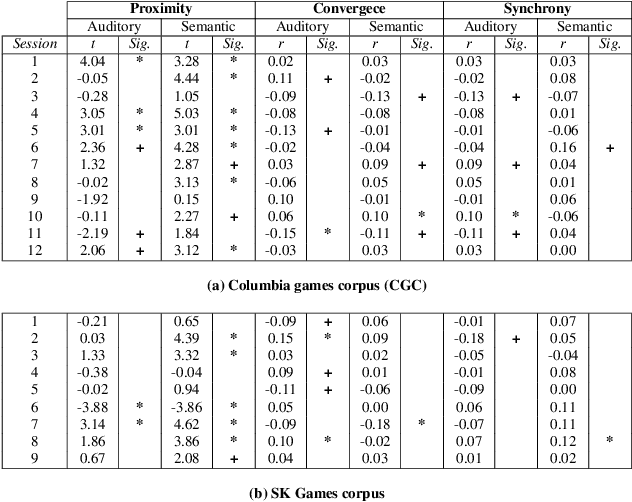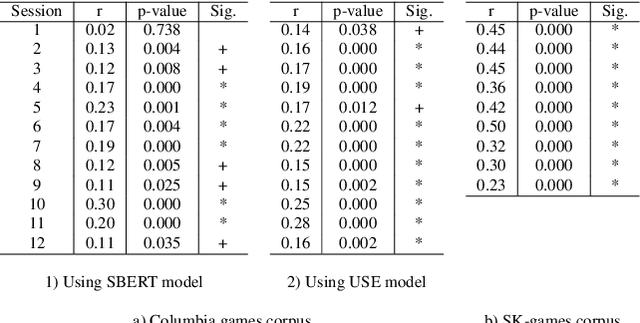Jay Kejriwal
Relationship between auditory and semantic entrainment using Deep Neural Networks (DNN)
Dec 27, 2023

Abstract:The tendency of people to engage in similar, matching, or synchronized behaviour when interacting is known as entrainment. Many studies examined linguistic (syntactic and lexical structures) and paralinguistic (pitch, intensity) entrainment, but less attention was given to finding the relationship between them. In this study, we utilized state-of-the-art DNN embeddings such as BERT and TRIpLet Loss network (TRILL) vectors to extract features for measuring semantic and auditory similarities of turns within dialogues in two comparable spoken corpora of two different languages. We found people's tendency to entrain on semantic features more when compared to auditory features. Additionally, we found that entrainment in semantic and auditory linguistic features are positively correlated. The findings of this study might assist in implementing the mechanism of entrainment in human-machine interaction (HMI).
Unsupervised Auditory and Semantic Entrainment Models with Deep Neural Networks
Dec 22, 2023Abstract:Speakers tend to engage in adaptive behavior, known as entrainment, when they become similar to their interlocutor in various aspects of speaking. We present an unsupervised deep learning framework that derives meaningful representation from textual features for developing semantic entrainment. We investigate the model's performance by extracting features using different variations of the BERT model (DistilBERT and XLM-RoBERTa) and Google's universal sentence encoder (USE) embeddings on two human-human (HH) corpora (The Fisher Corpus English Part 1, Columbia games corpus) and one human-machine (HM) corpus (Voice Assistant Conversation Corpus (VACC)). In addition to semantic features we also trained DNN-based models utilizing two auditory embeddings (TRIpLet Loss network (TRILL) vectors, Low-level descriptors (LLD) features) and two units of analysis (Inter pausal unit and Turn). The results show that semantic entrainment can be assessed with our model, that models can distinguish between HH and HM interactions and that the two units of analysis for extracting acoustic features provide comparable findings.
 Add to Chrome
Add to Chrome Add to Firefox
Add to Firefox Add to Edge
Add to Edge